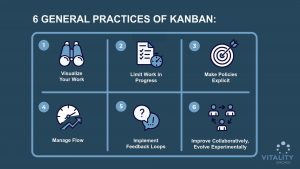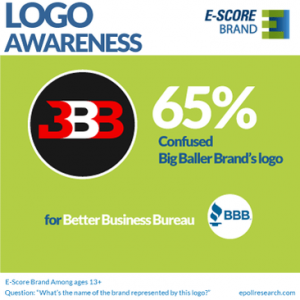If you’re like most who have decided it’s time for a change, your natural first task is to start browsing the job postings on social media, your favorite companies, career boards, etc. You click through jobs, reading the requirements and think, I’m perfect for that. You find another and think, I’m perfect for that too!
You get excited and dust off you resume. You update it with all the great things you did at your current job and make sure all your jobs are listed in order with dates of employment and duties. As you read through your resume you notice a few more changes and tweaks to make.
Next, you go back to all those great postings you found and begin the monotonous process of filling out applicant profiles with a bunch of information that is meaningless until you’re actually hired. With your resume uploaded, address updated, phone number entered, email listed, daytime phone number, work phone number, references, previous supervisor, etc., etc.; you gleefully hit submit. It will now only be a matter of time before you get that call.
Days go by, weeks go by. As you apply for more jobs you carefully log them and realize you have applied for 16 jobs that you are perfect for you, but haven’t received a single call. Hours upon hours have been spent on this and you just can’t figure out what’s wrong, why haven’t you gotten any phone calls.
Here’s why. Your resume went into this black hole known as an applicant tracking system along with dozens or hundreds of others. The job was posted on Monday and on the following Tuesday the HR assistant with less than a year of experience began screening the resumes for key words and such. That is if the artificial intelligence in the applicant system didn’t kick you out first. Do you think this individual went through all the resumes? You’re right, not even close.
That’s because the HR assistant screening the resumes has no clue how to read this antiquated document so they go with what they know and don’t know; applying a series of keyword searches, review of previous job titles and dates of employment. Ten lucky contestants, the ones who listed the right information identifiable by a keyword search have been given the illusion they are the most qualified. And to be fair, maybe they are. Added to that, there is some luck in the fact they made the “short list.” It doesn’t mean these people are anymore qualified than you. It’s more likely they were the 19th caller into the radio station that day.
Now back to that gate keeping HR assistant. They’re just trying to work hard and work their way up the ladder and prove themselves so we won’t blame them. You can blame the HR leadership machine (full disclosure, I’ve been part of that machine) that has delegated these tasks all the way down to the least experienced people, because quite frankly nobody likes reviewing resumes. Yes, so the least experienced people are the ones reviewing resumes and making qualification determinations off of a piece of paper that outlines one’s life work and achievements—scary, huh!
So what’s the point here? You’re smart, you’ve probably figured out spending hours sending your written masterpiece into the black hole of recruiting is not a good use of your time. Here’s where you need to stop thinking like an employee and start thinking like a business owner.
You have skills, you have talents, you have services you are looking to provide, ahem…sell to, your next employer. Yes, you are selling your services for a paycheck.
Step 1, Define Your Universe
Do a little research and find out what industries and companies might be most in need of those services. And don’t get down on yourself if you find they aren’t your dream company or industry. Remember, even dream companies are not all they’re cracked up to be if you’re not doing the things you like nor using your strengths. This new universe is where you are going to market yourself—we’re not going to call it applying for jobs anymore.
Step 2, Who Are the Masters of This Universe
Who are the decision makers? Who would be your future client? Who makes the purchasing decision and signs the invoices? AKA – your future boss. Once you identify them place them through your social networking filters and see if anyone you know, knows them. If you get a hit, put them at the top of your list. Log all their contact information, to included their address—very important!
Step 3, Start Writing
Take that awesome chronological resume you have and replace it with a functional resume. There are many articles on how to write a functional resume. Basically, you are creating a marketing document that highlights your key skills, abilities, the problems you solve–provide some real examples. Your work history and titles can trickle in there at the bottom somewhere. Limit this to one page, front and back if you must. Create a two-inch margin on the side for you to write. Title it with the same title of the position you are seeking.
Step 4, Craft Your Message
Research something unique about your recipient and the company. If you can identify the problem they need solving, even better. Craft a personalized specific message in that column addressing the pain point. Take a good old-fashioned highlighter and highlight areas in your resume that may be interesting to your reader.
Step 5, Communicate
Mail a copy of your personalized functional resume to your recipient. Then follow-up with an email at a point in time when it’s reasonable to assume they received it. After 24 hours follow-up with a phone call to ask for a meeting.
Why does this work?
Simple. Managers hate the interviewing and hiring process almost as much as you do, if not more. They go through a long process with the illusion that it’s critical to making the right hire. What are they really looking for? People with initiative. People who will make their life easier. People who are accountable and responsible.
Take this approach and you’ll schedule a lot more meetings in a lot less time. Even if you’re referred back through the HR wormhole, at least the decision maker knows who you are before the interviews even begin. It won’t work every time, but it will work and you will be able to choose which client to work with (AKA-offer to accept).
Business & Finance Articles on Business 2 Community(103)









